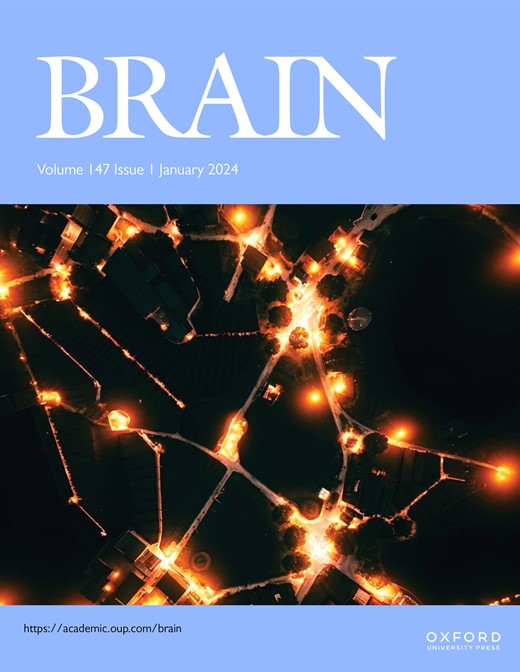用于敏感检测亨廷顿氏病进展的数字运动评分
IF 10.6
1区 医学
Q1 CLINICAL NEUROLOGY
引用次数: 0
摘要
对亨廷顿氏病(Huntington's disease,HD)进行远程数字监测有可能促进治疗方法的开发,但目前还没有数据驱动的数字运动评分来量化疾病表现的多样性并跟踪其进展。亨廷顿氏病数字运动进展评分(HDDMS)由HD患者和神经学家共同设计,是临床研究中测量HD运动进展的综合评分。它来自于远程 HD 数字监控平台中基于智能手机传感器的运动测试。HDDMS 的开发包括根据所需的测量属性选择量化测试性能的特征,并通过因子分析将这些特征组合成加权综合评分。该系统由四项独立研究(HD 自然史研究 [NCT03664804]、托米纳森 I/IIa 期研究的开放标签扩展 [OLE][NCT03342053]、GENERATION HD1 [NCT03761849] 和数字 HD)的数据开发而成,随后进行了验证。HDDMS 以 1008 名患者的数据为基础,包括平衡、舞蹈症、快速拍打和步态。它具有良好的特性,包括可靠性(类内相关系数> 0.95)、与亨廷顿综合评定量表(cUHDRS)的相关性(r = -0.5)以及比cUHDRS更好的变化敏感性(STC)。在对 GENERATION HD1 进行的事后分析中,HDDMS 在第 20 周时的 STC 与 cUHDRS 在第 68 周时的 STC 相当。HDDMS 可大幅减少临床试验的样本量。本文章由计算机程序翻译,如有差异,请以英文原文为准。
A digital motor score for sensitive detection of progression in Huntington’s disease
Remote digital monitoring of Huntington’s disease (HD) has potential to enhance the development of therapeutics, but no data-driven digital motor score exists to quantify the diversity of disease manifestations and track their progression. The Huntington’s Disease Digital Motor progression Score (HDDMS), co-designed by people with HD and neurologists, is a composite score for measuring motor progression of HD in clinical research. It is derived from smartphone sensor-based motor tests included in a remote HD digital monitoring platform. Developing the HDDMS involved selecting features that quantify test performance according to desired measurement properties and combining these features in a weighted composite score using factor analysis. It was developed and subsequently validated using data from four separate studies (HD Natural History Study [NCT03664804], open-label extension [OLE] of the tominersen Phase I/IIa study [NCT03342053], GENERATION HD1 [NCT03761849], and Digital-HD). Based on data from 1,008 individuals, the HDDMS encompasses balance, chorea, speeded tapping, and gait. It has favourable characteristics, including reliability (intraclass correlation coefficient > 0.95), correlation with the composite Unified Huntington’s Disease Rating Scale (cUHDRS) (r = −0.5), and better sensitivity to change (STC) than the cUHDRS. In a post-hoc analysis of GENERATION HD1, the STC of HDDMS at Week 20 was comparable to that of the cUHDRS at Week 68. The HDDMS promises substantial reduction in sample size in clinical trials.
求助全文
通过发布文献求助,成功后即可免费获取论文全文。
去求助
来源期刊

Brain
医学-临床神经学
CiteScore
20.30
自引率
4.10%
发文量
458
审稿时长
3-6 weeks
期刊介绍:
Brain, a journal focused on clinical neurology and translational neuroscience, has been publishing landmark papers since 1878. The journal aims to expand its scope by including studies that shed light on disease mechanisms and conducting innovative clinical trials for brain disorders. With a wide range of topics covered, the Editorial Board represents the international readership and diverse coverage of the journal. Accepted articles are promptly posted online, typically within a few weeks of acceptance. As of 2022, Brain holds an impressive impact factor of 14.5, according to the Journal Citation Reports.
 求助内容:
求助内容: 应助结果提醒方式:
应助结果提醒方式:


